Gabon is a French equatorial country with over forty ethnic groups. The French influence on Gabonese culture is prevalent. The largest ethnic group is the Fang, forming 40 percent of the population. Other major groups are the Teke, the Eshira, and the Pounou. As in many African countries, the borders of Gabon do not correspond to the borders of the ethnic groups. The Fang, for example, inhabit northern Gabon, Equatorial Guinea, southern Cameroon, and the western part of the Republic of Congo. The cultures of the ethnic groups are similar to other groups in Central Africa, and center around the rain forest and its treasures. The ceremonial traditions vary.
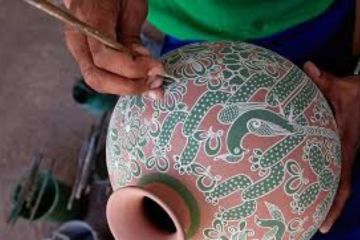
Folk art
Art in Gabon has been taught from generation to generation. This includes the art of wood carving or sculptures and traditional mask making. These masks are used at traditional ceremonies and events. Dance traditions in Gabon were mostly used in religious ceremonies. Different dances are used for different purposes and events (especially those that are tied to the Bwiti traditions), such as births, funerals, and coming-of-age ceremonies. Today, all kinds of dances –both traditional and pan-African as well as styles from Europe and the US– are taught and performed in clubs and dance troupes. The video below isn't of the best quality, but you can tell that the dance in this women's initiation ceremony uses rattles tied to the ankles of the women as they make quick movements with their hips and feet.
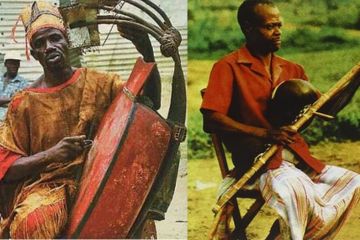
Folk Music
Music in Gabon is made up of different traditional styles, depending on the different ethnic groups. Gabonese folk music generally includes the folk traditions of the four main Bantu tribes - the Fang, the Punu, the Nzebi, and the Obamba. They are mostly known for their music accompanying Bwiti religious ceremonies, especially that of the Fang and the Mitsogho. During these ceremonies, drums and the ngombi harp is played, heightening the effects of the iboga.
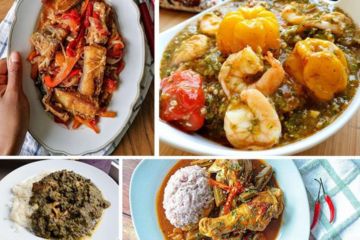
Cuisine
Gabon has a unique food culture and recipes passed down for generations. There are
various dishes prepared and served by the Gabonese. Gabonese cuisine mainly includes
cassava, rice, yams, beef, chicken, fish, bush meat, bananas, tomatoes, onions, corn,
sauces, and pepper.
Some of the dishes include: Nyembwe, a chicken with a sauce that is made from palm
nut pulp; Atanga, - this is boiled Atanga fruit whose flesh is spread on bread,
Brochettes, skewered meat that is roasted over an open fire; Fufu, a dish made out of
pounded cassava or cassava flour; Gari, a thick porridge made out of cassava flour;
Congo chewies, a desert, originally from Congo, smoked fish, baked bananas - these are
coated with bread crumbs and served with sour cream and sugar.
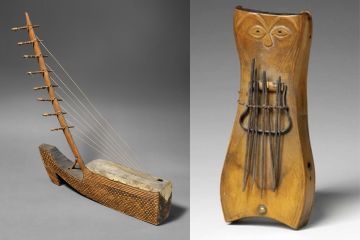
Traditional Instruments
Obala, Mvet, Ngombi, Ebele and Mbe, Medzang, Balafon, Eleke with deep triangular sound box, made by the Mpongwe people of Gabon and traditional drums are some of the traditional music instruments. Traditional instruments like the iboga and the obala are mostly used in traditional ceremonies and initiations.

Folk dances
Mvet Dance: The Mvet is a musical instrument, and the Mvet
dance is a traditional dance
that often accompanies the playing of the Mvet. It is a dance of the Fang people.
N'gambaye Dance: The N'gambaye dance is a traditional Bantu dance performed by the
Bapunu people of Gabon.
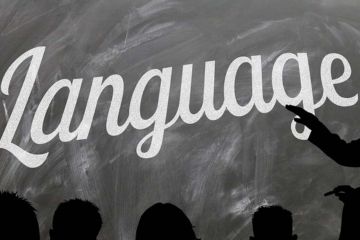
Language
French is the official language in Gabon, however 32% of the people speak Fang as a mother tongue. The indigenous languages are all members of the Bantu family, estimated to have come to Gabon about 2,000 years ago, and differentiated into about 40 languages.